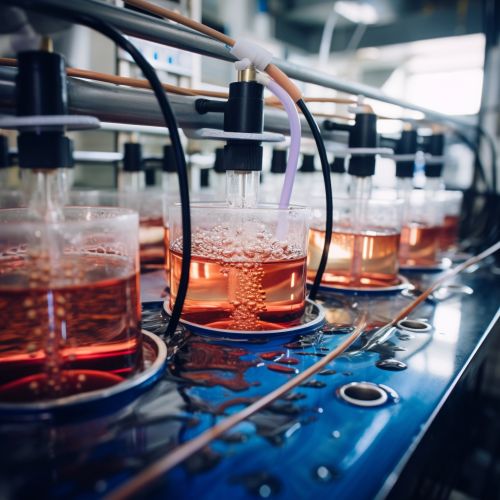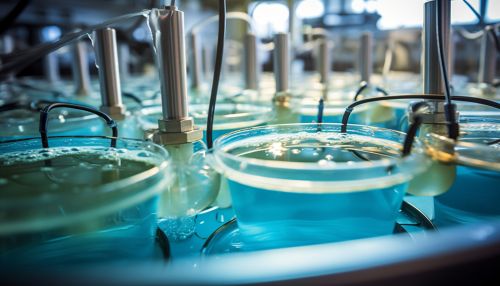Flocculation
Introduction
Flocculation, a process that occurs in colloidal suspensions, involves the aggregation of particles into larger clusters, known as flocs. This process is distinct from coagulation, which involves the addition of a coagulant chemical that neutralizes the charge on the particles, allowing them to stick together. Flocculation, on the other hand, is a physical process and does not change the nature of the particles themselves.


Mechanism of Flocculation
The mechanism of flocculation involves the interaction of particles in a suspension. The particles, which are usually negatively charged, repel each other due to the electrostatic forces between them. When a flocculant is added to the suspension, it neutralizes the charge on the particles, reducing the repulsion between them. This allows the particles to come closer together and form flocs. The flocculant, often a polymer, acts as a bridge between the particles, holding them together in a floc.
Types of Flocculation
There are three main types of flocculation: perikinetic, orthokinetic, and contact flocculation.
Perikinetic Flocculation
Perikinetic flocculation is caused by the Brownian motion of particles. The random movement of particles in a fluid due to Brownian motion can lead to collisions between particles, which can result in the formation of flocs.
Orthokinetic Flocculation
Orthokinetic flocculation occurs when particles are brought together by external forces, such as mechanical mixing or fluid flow. The external forces cause the particles to move, increasing the chances of collisions and floc formation.
Contact Flocculation
Contact flocculation is a process where particles come into contact and form flocs due to the presence of a flocculant. The flocculant acts as a bridge between the particles, holding them together in a floc.
Applications of Flocculation
Flocculation has a wide range of applications in various fields, including water treatment, papermaking, and brewing.
Water Treatment
In water treatment, flocculation is used to remove suspended solids from water. The process involves the addition of a flocculant to the water, which causes the suspended solids to form flocs. The flocs can then be easily removed from the water through sedimentation or filtration.
Papermaking
In the papermaking industry, flocculation is used to form a network of fibers in the paper. The flocculant is added to the pulp, causing the fibers to form flocs. The flocs create a network that gives the paper its strength and structure.
Brewing
In brewing, flocculation is an important part of the fermentation process. The yeast used in brewing forms flocs at the end of the fermentation process, which can be easily removed from the beer.
Factors Affecting Flocculation
Several factors can affect the flocculation process, including the type and concentration of the flocculant, the pH of the solution, the temperature, and the presence of other substances in the solution.
Flocculant Type and Concentration
The type and concentration of the flocculant can greatly affect the flocculation process. Some flocculants are more effective than others at causing particles to form flocs. In addition, the concentration of the flocculant in the solution can also affect the size and stability of the flocs.
pH
The pH of the solution can affect the charge on the particles, which can influence the flocculation process. At certain pH levels, the particles may have a neutral charge, which can prevent them from repelling each other and allow them to form flocs.
Temperature
The temperature of the solution can also affect the flocculation process. Higher temperatures can increase the rate of flocculation, as they can increase the movement of particles and the chances of collisions.
Presence of Other Substances
The presence of other substances in the solution can interfere with the flocculation process. Some substances can compete with the flocculant for binding sites on the particles, reducing the effectiveness of the flocculation process.
